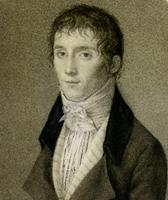Monday, December 17, 2012
Friday, December 7, 2012
Thursday, November 29, 2012
10 Best Processed Photos
Who: Younger Brother
Where: Hospital
When: 2009
Why: The layer makes the white bumps on his nose dissappear.
Who: Younger brother
Where: Home, Kitchen
When: Septemberish
Why: Was bored, he was making funny faces.
Who: Younger Brother
Where: Photo studio
When: October
Why: The filter fixes the lighting.
Who: Myself
Where: Bedroom
When: November 26th
Why:I discovered the timing function
Who: Myself
Where: Home
When: November 24th
Why: I remembered the thing where half face then half money so I just did my whole face on my dads iPad.
Tuesday, October 9, 2012
Web Assignment #3
Web Assignment #3
1. The brownie camera was the camera that introduced snapshots.
2. The brownie camera was invented by George Eastman in 1900.
3. Society wise it changed it because it was cheap and in the photography world it was revolutionary because it was a cheap piece of equipment and had a decent build. Anyone could afford it and use it.
Thursday, September 27, 2012
Assignment #2
Web Assignment #2
1. The daguerrotype was the very first successfully commercial photo process. The surface of the daguerrotype resembled a mirror.
2. Albumen print was the first method to produce photographic print. The main ingredient was egg white or cotton paper. It was outdated when a new method called carte de visit was invented.
3. stereograph was old fashioned 3D glasses popular from 1940s to mid 1950s.
4. Carte de visite were small albumen prints mounted on cards. They were used as pictures as they were standard size.
5. Matthew Brady and Alexander Gardner were photographers and were noted for their pictures of the civil war. They were active during the civil war.
Monday, September 17, 2012
Nicéphore Niépce
Nicéphore was a french inventor who invented and developed the internal combustion engine. Nicéphore is also famous for the first photograph. He was also the staff officer under Napoleon. Nicéphore's first believed photo was a picture known as the "View from the Window at Le Gras". It was the only surviving photo. An etching of Pope Pius VII was his first but was destroyed when he attempted to duplicate it. The photo "View from the Window at Le Gras" was taken by Nicéphore at his estate at France. The exposure time for "View from the Window at Le Gras" was eight hours. "View from the Window at Le Gras" was taken in the summer of 1826."View from the Window at Le Gras" is currently held in Harry Ransom Humanities Research Center at the University of Texas at Austin.
Subscribe to:
Posts (Atom)























